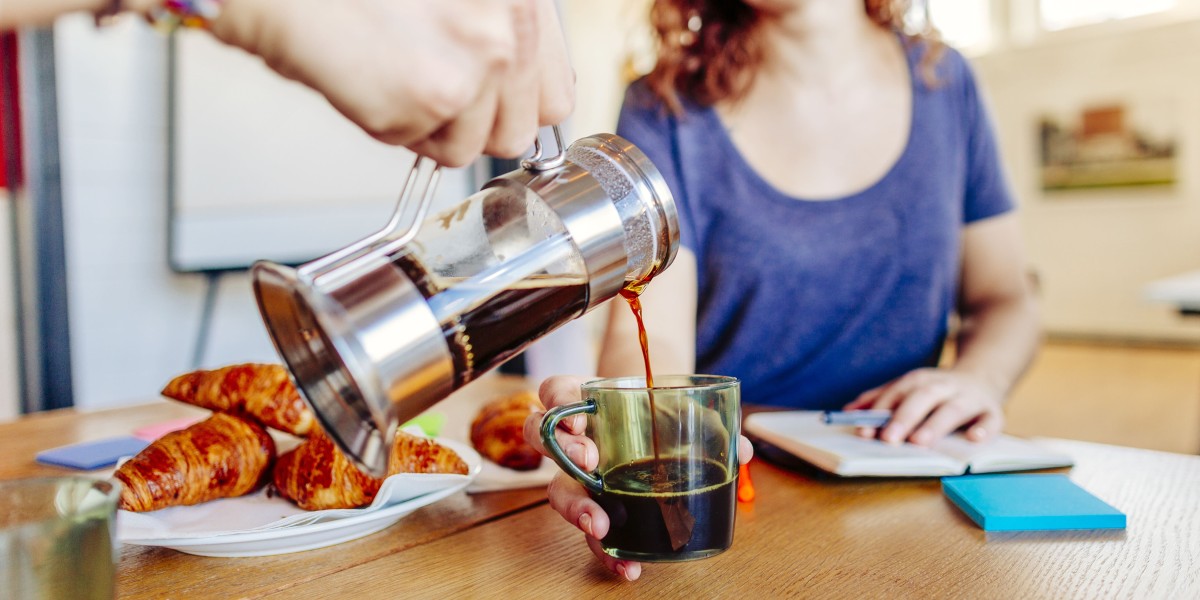 Coffee pods (also known as capsules) are single-portion dosages of coffee. They contain the coffee powder that has been sealed in a protective casing made from aluminum or plastic.
Coffee pods (also known as capsules) are single-portion dosages of coffee. They contain the coffee powder that has been sealed in a protective casing made from aluminum or plastic.In contrast to bean-to-cup machines, pod coffee makers require very minimal maintenance and cleaning. Nonetheless, the water reservoir and the brewing mechanism must be rinsed and descaled regularly.
Freshness
Pod machines are popular among consumers who value convenience over taste. However, they are unable to compare to freshly roasted and ground beans. Some companies do not follow strict rules to guarantee the quality of their coffee pods. This is especially the case with preground coffee that is no longer fresh after it has been pressed into a pod and sealed. This coffee is typically years beyond its best-before date and can affect the taste and smell of the cup.
Aside from the quality of the coffee that is preground, another important consideration is the freshness of the pod. The pods are made of a paper-like substance, which makes them easy to digest when they are disposed of. They're a great choice for those who are concerned about the environment. Additionally, the paper material is biodegradable so you won't have to worry about your waste getting thrown away in a landfill.
Coffee pods are available in various sizes and are compatible with a variety of coffee machines. The most commonly used types are K-Cups (K-Cups), Nespresso capsules, and Easy Serving Espresso pods (E.S.E). Each one is distinctive and compatible with a range of brewers. But, it is crucial to understand the differences between these types before making a purchase.
While most pods are made of aluminium or plastic, some are made of more sustainable materials, like bamboo and hemp. They are typically smaller than conventional coffee bags and come in an oval shape that can fit into pod coffee machines. They can also be reused several times before needing to be replaced. These pods offer a great alternative to single-use filter cartridges.
Pods are also more convenient than whole-bean coffee because they're more convenient to store and use. They're usually sealed to prevent moisture and reduce the possibility of mold. They don't require any additional storage or equipment. To maintain their taste and consistency, they should still be stored in a cool, dry place. Most pods also have an expiration date. This helps you avoid purchasing expired products. If you're unsure if the pod is still in use, check the expiration date or label.
Convenience
Using pods allows you to enjoy your favorite coffee every time without having to grind and prepare your own beans. This will cut down on time and give you the convenience of a drink within a matter of minutes. The pods also taste better than ground coffee beans since they come in a flexible packaging that has been nitrogen flushed to preserve the aromas and flavors longer.
But, it is important to remember that the taste of your cup depends on the quality of the coffee maker. It is important to choose a model capable of producing an excellent cup of coffee, and that can handle different types. Some models require regular cleaning and decaling of the reservoir for water. Bean-to-cup machines can also be susceptible to this problem however they don't need the same level of maintenance as pod machines.
Many people purchase a pod coffee machine to save the hassle of grinding and brewing coffee grounds themselves. Despite the convenience that pods offer, they cannot replicate the variety of flavor and complexity that is available from bean-to-cup coffee machines. Beans are available in a variety of varieties and are roast in hundreds, maybe thousands of ways. This is the reason for the variety of brews available. Pods are also limited in the amount of coffee they contain, so a single serving can't be as large as the typical cup of coffee made with grounds.
The plastic used in the making of pods may also be harmful to the environment. Some people are hesitant to use them due to this. The good news is that there are compostable and recyclable options available for those who wish to reduce their environmental footprint.
It is crucial to select the best place to store your pods. You can put your pods in a drawer or a container for coffee pods. It's also a good idea to keep some kitchen shears on hand to cut the top of the pod, which will allow you to empty the contents into the filter in the coffee maker.
Cost
In an age where people are environmentally conscious every method of coffee making that is less wasteful is welcomed. Coffee pods are becoming increasingly well-known. Coffee capsules or pods are single-portion doses of coffee powder that are sealed in a paper container. They can be used on any coffee machine accepting capsules that are open system like the ones made by Nespresso or Nescafe Dolce Gusto. Each standard pod contains around 7g of ground coffee. They're also easy to degrade once you've finished using them which makes them a great choice for those looking to reduce their carbon footprint.
There are a variety of pods on the market, with the most common being K-Cup, Nespresso capsule, and ESE (Easy Serving Espresso). Before buying a pod, ensure that your coffee machine is compatible with the kind you're looking for. A pod that isn't compatible could cause frustration, waste, and possibly damage to the machine.
When you are choosing a pod maker, it's important to consider your top priorities. Some come with milk frothers, and others only offer a range of sizes for drinks. You may also want to think about how much counter space you have, as this can affect your choice of the best coffee maker.
The cheapest pod machine is the Nescafe Dolce Gusto Y3 which costs from $55. It is a simple method to make a cup of coffee, simply lift the top flap to release the capsule that was used, then put in a brand new one and press a button to create either a large or small coffee machine cup.
It's important to keep in mind that while pod machines are typically less expensive to purchase than bean-to-cup ones but they may be more expensive in the long run if you make use of a lot of pods. This is because pods themselves can be quite expensive and the cost of a bag of beans is significantly less. In addition, a bean to cup machine can be easier to maintain than a pod-based one, so it's important to weigh the pros and cons of each before deciding which one is best for you.
Environment
Long have coffee pods, which are used in many single-serve machines, have been criticized as environmentally harmful. Recent research suggests that they could be more sustainable for the earth than traditional filter coffee machines. The new study examined the greenhouse gas emissions of four different methods of brewing coffee: French press coffee, instant coffee, filtr coffee and capsules. The results were surprising and could have changed your perception about these pods that are single-use.
The researchers discovered that a cup of coffee made with a traditional filter machine released 1.5 times as much greenhouse gasses as a cup made by a single-serving brewing capsule. These results were based on the total amount of water, coffee, and electricity required to make a cup of espresso. The authors point out however that the environmental impact is also influenced by other factors, such as their production and disposal. This is because of the fact that these products use a significant amounts of energy to make and ship them to storage.
The process of making coffee pods and the greenhouse gases that result from it also produce lots of waste. This is particularly true when the products aren't recycled, which is why it's crucial to buy sustainable coffee pods that can be reused.
 In contrast to ground coffee, which is typically sold in plastic-lined bags which aren't recyclable. The majority of pods are made from materials like aluminum and plastic which can be recycled. Some companies are even offering coffee pods that can be composted that means they're able to be composted naturally in a home compost bin.
In contrast to ground coffee, which is typically sold in plastic-lined bags which aren't recyclable. The majority of pods are made from materials like aluminum and plastic which can be recycled. Some companies are even offering coffee pods that can be composted that means they're able to be composted naturally in a home compost bin.Another issue with disposable coffee pods is that they do not conserve any of the water or energy that a normal filter machine does which is a huge issue for sustainability. They also add more sugar to the coffee, which isn't good for your health.
While it's important to make use of sustainable coffee pods it's equally important to look at the larger picture in relation to climate change. Coffee pods in the news often divert attention away from the real sources of planet-heating emissions. In the end, it's crucial to focus on what really matters - ending the need for oil and coal to power our homes and businesses.




